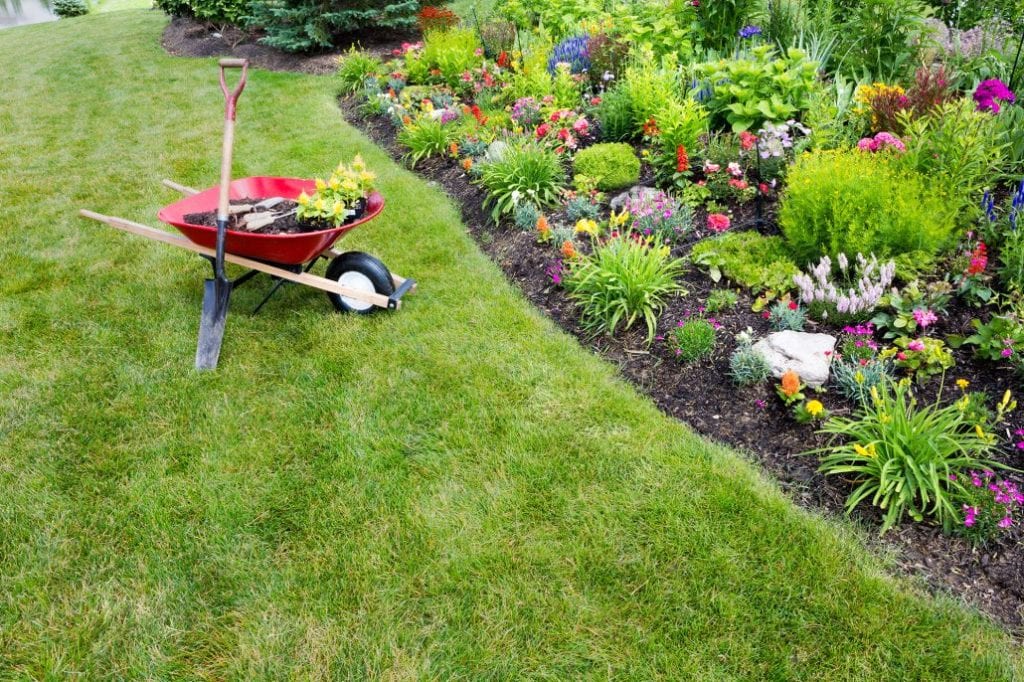
Spring comes along bringing in a cool breeze, and brighter days. But, it also uncovers the damage done to your yard. This means that spring is the prime time for sprucing up your landscaping. We’re here with the top priority tasks to keep your yard in peak condition and get it summer ready.
1. Rake the Thatch
Most people take a break from raking in spring. We spent all fall raking up dead leaves, and now that spring is around we don’t want to rake again. But it’s just as important to rake in the spring to maintain the thatch layer.
Thatch built up to ½ an inch or more is excessive. This layer is important, but too much of a good thing can lead to unwanted consequences. If the thatch isn’t maintained it can damage the otherwise healthy grass and roots underneath it.
2. Recover from Winter Soil Density
The soil is usually compacted because of foot traffic or heavy equipment, but there is another culprit. Snow and its process of melting and refreezing can severely impact your soil’s density. We’ve seen it a dozen times, spring comes around and our neighbor’s flowerbeds are replaced with pools of water.
Using a garden fork, test a few areas of your yard. The garden fork should easily go through about 2 inches of soil. If not, the yard needs a bit of aeration. Aerating the soil will minimally disturb the soil while allowing roots some room to grow. If you’re not sure how to do this, you can contact a professional that can do it for you, or offer training so you can handle it on your own.
Overly dense soil can also indicate that it’s time to plan on installing an irrigation or drainage system. If you already have one, yearly maintenance is easiest in the spring. There are multiple drainage solutions if your yard is flooding.
3. Fertilizer and Mulch
The ground has undergone so many changes through winter it’s important to give it some help in recovering. We recommend fertilizing early in the spring, which gives it proper feeding and herbicides.
This is part of most basic spring maintenance routines. Reintroducing nutrients is easy, but don’t go overboard! Using too much fertilizer can damage your lawn by making it difficult for the roots to grow or absorb water.
Mulch is often preferred because it’s usually organic. A thin layer of bed topdressing can help maintain the soil and prevent new weeds from growing.
4. Battle the Weeds Now
While we see our beautiful flowerbeds waking up, there is another sprout in the yard. That’s right, weeds. Minnesota’s winters are harsh, but they don’t stop weeds from busily rooting in the winter. Then they wait for warm weather and destroy yards.
Raking the thatch and fertilizing are great first steps to control weed growth. But we recommend these steps:
- Physically remove any visible weeds
- Wait a week before planting
- Use herbicide meant for your yard.
A special note on herbicides, different turfs, and plants require different care. It’s easy to cause severe damage from using the wrong product. Professional lawn care companies are usually armed with various types of herbicide to save your yard without causing damage.
5. Grass and Flowerbed Planting
This is the fun part of spring! It’s also the best time to bring some diversity into your landscaping. We recommend overseeding lawns in the spring to help establish different maturity levels. This is also recommended for flowerbeds and gardens. If an area isn’t perking up in the warm weather, introduce a new plant to help the others thrive with diversity.
Enjoy the Benefits of Spring
We hope our recommendations help keep your landscaping in peak condition. It’s important that any time you can spend outdoors is enjoyable. Recovering from winter shouldn’t take weeks, so even one good weekend spent on reviving your landscaping can show some big results!
